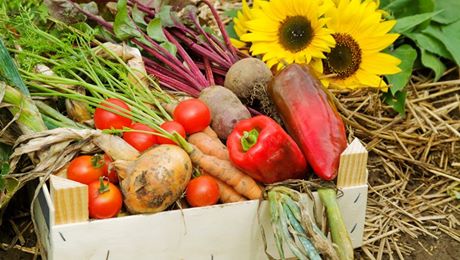
How to work the garden during the winter?
May the cold not stop any orchard! Although the winter months slow the activity of the garden and we are forced to take some special precautions, this time of year is the ideal time to strengthen the soil, do some pruning and start planning the spring planting.
On the other hand, it is fundamental to know which vegetables are best adapted to the freshest months. There are some fast growing crops that are ideal to take advantage of these remaining cold weeks, while we are planning the activity of the next season.
Special cares
In contrast to summer, in these months it is advisable to water at noon to prevent the frost of the night from injuring the vegetables. In this sense, it is also recommended to reduce the frequency of irrigation a little since, as water does not evaporate easily, there is a greater risk of fungi forming.
Anyone who wants to be more careful can put together a protection structure that covers masonry with "roof cover". For this can be used dry grass and / or wood chip, among others Another option is to cover the plants with some plastic layer, always taking care that it does not come in direct contact with the vegetables and uncovering frequently to allow the entrance of air.
Seasonal tasks
The current season is suitable for pruning. In these months, plants can heal cuts faster. This is why our grandmothers recommended pruning during the months that do not have "r" (May, June, July, August).
In addition to pruning, we must not forget to add to the winter agenda: "fertilize the soil". These days are especially recommended to harvest compost and fertilize the soil of stonecutters, pots and soils in general. In this way, we will be giving back the nutrients you lost during your summer season work.
What to cultivate before the heat starts?
These days we are already behind schedule if we want plants typical winter crops (broccoli, cauliflower, cabbage) because, before we can harvest them, we will find the next season.
To optimize the production of vegetables in the months prior to spring, we propose some fast-growing crops. These are vegetables that we can plant today and harvest in September, to then make room and prepare the planting of spring-summer.
Rabanitos: is one of the fastest growing crops. Sowing seeds at the beginning of the month, it is possible to harvest before it ends.
Green leaves (lettuce, chard, arugula, spinach) are generally ready two to three months after they have been planted and we can harvest them leaf by leaf as they grow.
Beet: It will take approximately three months to be harvested. It prefers humid and rather fresh climates, although it grows without problem in the summer. We can sow it now and while we wait for the beet to ripen, consume some of its leaves.
Finally, our last tip is "Patience"! Everything grows more slowly these days, but we will not stop working in our garden. In winter we can also produce an abundant amount of healthy, strong and organic vegetables.
*****
Português
Como trabalhar o jardim no inverno?
O frio não vai parar qualquer Huertero! Enquanto os meses de inverno lentifican pomar atividade e nos obrigam a tomar algumas precauções especiais, nesta época do ano é ideal para reforçar o piso, fazer alguma poda e começar a planejar para o tempo de plantio de primavera.
Por outro lado, é essencial saber quais as plantas mais adequado para os meses mais frios são. Existem algumas culturas de rápido crescimento que são ideais para usar essas semanas restantes de frio, enquanto estamos planejando a atividade temporada seguinte.
Cuidados Especiais
Em contraste com o verão, nestes meses, é conveniente para a água ao meio-dia para evitar a geada vegetais noite feridos. Neste sentido, é também recomendado para diminuir ligeiramente frequência irrigação porque, como a água não evapora facilmente, existe um risco aumentado de fungos de formar.
Quem extremo cuidado pode construir uma estrutura protetora que cobre canteiros com "vestir top". Para este grama seca e / ou aparas de madeira pode ser usado, entre outra opção é para revestir os outros pavimentos com uma camada de plástico, tendo sempre o cuidado de que este não está em contacto directo com a planta e muitas vezes o destapar para permitir a entrada de ar.
Empregos Sazonais
A época atual é propício para a poda. Nos últimos meses, as plantas podem curar cortes mais rápidos. É por isso que nossas avós recomendado para podar durante os meses que eles têm "r" (Maio, Junho, Julho, Agosto).
Além de poda, não devemos esquecer de adicionar ao inverno agenda: "fertilizar o solo" Estes dias são especialmente recomendadas para a colheita de compostagem e fertilizar o solo de canteiros de flores, potes e solos em geral. Desta forma, vamos voltar os nutrientes perdidos durante o trabalho de verão.
O que cultivar antes do início do tempo quente?
Estes dias que já estão por trás se quisermos plantas culturas de inverno típicos (brócolis, couve-flor, repolho), porque, antes de poder colheita, que vai encontrar na temporada seguinte.
Huertera para otimizar a produção nos meses antes da Primavera de propor algumas culturas de rápido crescimento. É hoje podemos plantar vegetais e colheita em setembro e, em seguida, fazer o quarto e se preparar para plantio de primavera e verão.
Rabanetes: é uma das culturas que mais crescem. Semear sementes no início deste mês, é possível colher antes de terminar.
folhas verdes (alface, acelga, rúcula, espinafre) são geralmente pronto para dois ou três meses de ser plantada e podemos colhê-las folha por folha, à medida que crescem.
Beterraba: Você vai precisar de cerca de três meses para ser colhido. Ele prefere clima úmido e bastante frio, mas cresce sem problema no verão. Podemos plantar agora, enquanto esperamos para a beterraba maduros, consumir algumas de suas folhas.
Finalmente, o nosso último conselho é "paciência"! Tudo cresce mais lentamente nos dias de hoje, mas certamente não vai parar de trabalhar no nosso jardim. No inverno, nós também podemos produzir uma abundância de vegetais saudáveis, fortes e orgânicos.

follwed and upvoted hope we will have a great cooperation
Downvoting a post can decrease pending rewards and make it less visible. Common reasons:
Submit
Nice post
Downvoting a post can decrease pending rewards and make it less visible. Common reasons:
Submit
Thank you so much Roky
Downvoting a post can decrease pending rewards and make it less visible. Common reasons:
Submit
Its my pleasure
Downvoting a post can decrease pending rewards and make it less visible. Common reasons:
Submit